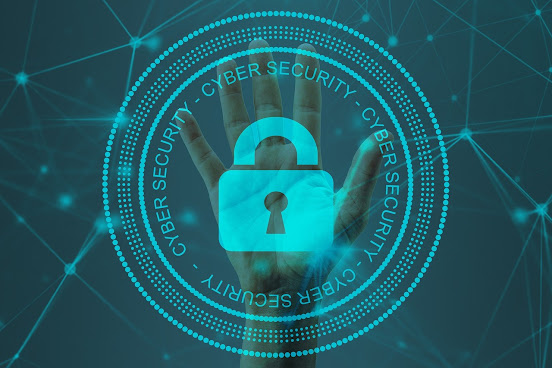"Cybersecurity Unveiled: Navigating the Digital Battleground"
Introduction to Cybersecurity
In today's interconnected digital world, where information flows freely and our lives are increasingly dependent on technology, the concept of cybersecurity has never been more critical. Cybersecurity is the practice of protecting computer systems, networks, and data from a wide range of threats, including cyberattacks, data breaches, and unauthorized access. It has evolved into one of the most pressing concerns for individuals, businesses, and governments alike.
As technology continues to advance and cyber threats become more sophisticated, the need for robust cybersecurity measures has grown exponentially. From personal information and financial data to critical infrastructure and national security, nearly every aspect of modern life relies on the secure functioning of digital systems. Failing to adequately safeguard these systems can have devastating consequences, both on an individual and a global scale.
In this exploration of cybersecurity, we will delve into the fundamental principles, challenges, and strategies that underpin the protection of our digital assets. We'll discuss the evolving threat landscape, the techniques used by cybercriminals, and the countermeasures developed by cybersecurity professionals to mitigate risks. Additionally, we'll explore the ethical, legal, and societal implications of cybersecurity, as well as the ever-growing importance of privacy in an age of constant connectivity.
Areas of cybersecurity
Cybersecurity encompasses a wide range of disciplines and considerations due to the diverse and evolving nature of cyber threats. Here are some of the key types or areas of cybersecurity that individuals, organizations, and governments must consider:
Network Security: Protecting the integrity, confidentiality, and availability of data as it flows over networks. This includes measures like firewalls, intrusion detection/prevention systems, and virtual private networks (VPNs).
Information Security: Safeguarding the confidentiality, integrity, and availability of data in storage and during transmission. This includes encryption, access controls, and data classification.
Endpoint Security: Protecting individual devices such as computers, smartphones, and IoT (Internet of Things) devices from malware, ransomware, and other threats. This involves antivirus software, anti-malware tools, and endpoint detection and response (EDR) systems.
Application Security: Ensuring that software applications are free from vulnerabilities and secure against attacks. This includes secure coding practices, regular patch management, and web application firewalls (WAFs).
Cloud Security: Securing data, applications, and infrastructure hosted in the cloud. This involves access controls, encryption, and monitoring in cloud environments like AWS, Azure, and Google Cloud.
Identity and Access Management (IAM): Managing user identities and controlling their access to systems and data. This includes multi-factor authentication (MFA) and identity verification processes.
Incident Response and Management: Developing plans and procedures to detect, respond to, and recover from cybersecurity incidents and breaches.
Security Awareness and Training: Educating employees and users about security best practices and raising awareness of potential threats like phishing attacks.
Physical Security: Protecting physical assets, such as data centers and network infrastructure, from physical threats and unauthorized access.
Security Governance and Compliance: Establishing policies, procedures, and standards to ensure compliance with industry regulations and best practices. This includes frameworks like ISO 27001 and NIST.
Critical Infrastructure Protection: Securing essential systems and services like power grids, transportation, and healthcare, which can have significant societal impacts if compromised.
Mobile Security: Protecting mobile devices, applications, and data from security threats, especially relevant in the era of smartphones and mobile computing.
IoT Security: Ensuring the security of Internet of Things devices, which are becoming increasingly prevalent and often lack robust security features.
Supply Chain Security: Managing risks associated with third-party vendors and suppliers that may have access to your systems or data.
AI and Machine Learning Security: Addressing the security concerns related to the use of artificial intelligence and machine learning algorithms in cybersecurity and other applications.
Privacy and Data Protection: Ensuring the privacy and protection of user and customer data in compliance with privacy regulations such as GDPR and CCPA.
Cybersecurity Policy and Regulation: Staying informed about and compliant with cybersecurity laws and regulations that may apply to your organization.
The specific types of cybersecurity that need to be considered depend on the nature of an organization's operations, its industry, and its risk profile. A comprehensive cybersecurity strategy often involves a multi-layered approach that combines various types of security measures to create a robust defense against cyber threats.
Cybersecurity challenges
Cybersecurity has faced a multitude of challenges and problems over the years, reflecting the constantly evolving nature of technology and cyber threats. Some of the main problems and ongoing challenges in cybersecurity include:
Rapidly Evolving Threat Landscape: Cyber threats continually evolve, becoming more sophisticated, diverse, and persistent. New attack vectors and techniques constantly emerge, making it challenging for organizations to keep up with the latest threats.
Cybercrime Proliferation: Cybercrime has become a lucrative industry. Cybercriminals operate with financial motives, and this motivation fuels the development of advanced malware, ransomware, and other malicious tools.
Insider Threats: Insider threats, whether intentional or accidental, pose significant risks to organizations. Malicious insiders with access to sensitive data can cause severe damage, while well-meaning employees can inadvertently expose vulnerabilities.
Shortage of Skilled Cybersecurity Professionals: The demand for skilled cybersecurity experts far exceeds the supply. This shortage makes it difficult for organizations to find and retain qualified professionals to defend against cyber threats effectively.
Complexity of IT Environments: Modern IT environments are incredibly complex, with a mix of on-premises, cloud, and hybrid infrastructure. Managing security across these environments can be challenging and may lead to vulnerabilities.
Legacy Systems and Outdated Software: Legacy systems and outdated software often have security vulnerabilities that are difficult to patch or replace. Attackers can exploit these weaknesses to gain unauthorized access.
Lack of Cybersecurity Awareness: Many individuals and employees lack cybersecurity awareness and fall victim to phishing attacks and other social engineering tactics. This human factor remains a significant vulnerability.
Privacy Concerns: As more data is collected and shared online, privacy concerns have grown. Striking a balance between data security and individual privacy is an ongoing challenge for governments and organizations.
Supply Chain Vulnerabilities: Organizations are increasingly reliant on third-party vendors and suppliers, making them vulnerable to supply chain attacks. Cybercriminals target the weakest link in the supply chain to gain access to the main organization.
Regulatory Compliance: Meeting the requirements of various cybersecurity regulations and standards can be complex and costly. Organizations must navigate a patchwork of regulations, such as GDPR, HIPAA, and industry-specific standards.
International Cybersecurity Threats: Cyberattacks often transcend borders, making it challenging to pursue cybercriminals and enforce laws. International cooperation and coordination are essential to combat cybercrime effectively.
Zero-Day Vulnerabilities: Attackers sometimes exploit previously unknown vulnerabilities (zero-days) before organizations can develop and deploy patches, leaving systems exposed.
Advanced Persistent Threats (APTs): APTs are long-term, targeted attacks often backed by nation-states or highly organized groups. They require sophisticated defense strategies to detect and mitigate.
Scalability: Protecting large-scale networks and systems, especially for multinational corporations or government agencies, poses significant scalability challenges.
Security Awareness and Training: Ongoing education and training are essential to keep users informed about evolving threats and security best practices.
Addressing these problems and challenges in cybersecurity requires a multi-pronged approach that combines technology, policy, education, and collaboration across organizations and industries. As cyber threats continue to evolve, the field of cybersecurity must adapt and innovate to stay one step ahead of malicious actors.
Trends in cybersecurity
The future of cybersecurity is poised for continuous evolution and adaptation as technology advances and cyber threats become more sophisticated. Here are several key trends and developments that are likely to shape the future of cybersecurity:
AI and Machine Learning in Security: AI and machine learning will play an increasingly significant role in cybersecurity. These technologies can analyze vast amounts of data to identify patterns and anomalies, aiding in threat detection, incident response, and automation of routine security tasks.
Zero Trust Architecture: The Zero Trust security model, which assumes no trust, even inside the network perimeter, will gain more prominence. It focuses on verifying and authenticating all users and devices, continuously monitoring for threats, and reducing the attack surface.
Quantum Computing Threats and Solutions: Quantum computers, when they become widely available, could potentially break current encryption methods. As a result, post-quantum cryptography and quantum-safe security measures will be developed and adopted.
IoT and Edge Device Security: The proliferation of Internet of Things (IoT) devices and edge computing will expand the attack surface. Securing these devices and networks will be a significant challenge, requiring improved device management, authentication, and firmware security.
5G Network Security: The rollout of 5G networks will introduce new security considerations, including the need for improved encryption, network segmentation, and protection against attacks on the 5G infrastructure itself.
Cloud-Native Security: As organizations continue to migrate to the cloud, cloud-native security practices and tools will become essential. This includes container security, serverless security, and cloud workload protection platforms (CWPPs).
Biometric Authentication: Biometrics such as facial recognition and fingerprint scanning will gain popularity as methods of authentication, providing a more secure and user-friendly way to access systems and data.
Human-Centric Security: Understanding and addressing the human element in cybersecurity will be critical. Security awareness training and behavioral analytics will play a more significant role in preventing insider threats and social engineering attacks.
Ransomware Defense: Ransomware attacks are expected to become even more targeted and destructive. Organizations will need to invest in robust backup and recovery solutions, as well as threat intelligence sharing to stay ahead of ransomware threats.
Regulatory Changes: Cybersecurity regulations will continue to evolve globally, with stricter requirements for data protection and breach reporting. Organizations will need to stay compliant with these regulations and adapt to changing legal landscapes.
Supply Chain Security: Securing the supply chain will become a top priority, with organizations taking steps to assess and mitigate risks associated with third-party vendors and suppliers.
AI-Generated Attacks: As AI becomes more sophisticated, cybercriminals may use AI-driven attacks, making them more challenging to detect and defend against.
Cybersecurity Workforce Development: Addressing the shortage of skilled cybersecurity professionals will remain a priority, with more emphasis on workforce development and training programs.
International Collaboration: Cyber threats often transcend borders, necessitating increased international cooperation and information sharing to combat cybercrime effectively.
The future of cybersecurity will undoubtedly be marked by both opportunities and challenges. Organizations and governments must remain proactive, agile, and innovative in their approach to cybersecurity to stay ahead of emerging threats and protect their digital assets and critical infrastructure.





Comentarios
Publicar un comentario